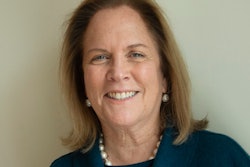Fall has always been one of my favorite seasons. This fall, when classes resume at colleges and universities across America, first-year and transfer students will not be the only newbies on campus. They will be joined by hundreds of new faculty members, department chairs and deans, along with occupants new to the C-suite, most notably presidents and chancellors. While new students will have access to a bevy of people and services to help them get off to a successful start, regrettably, the same cannot be said about new presidents, many of whom will be left to fend for themselves.
There will be the customary university press release announcing the new president’s appointment, including information about academic, administrative, corporate, or political pedigree. If the new president is the first woman, ethnic minority, or lay person appointed to the position, there will be an added measure of self-congratulations for the institution’s commitment to diversity, equity, belonging, and inclusion. If, on the other hand, the appointee is a member of the LGBTQ+ community, the press release is less likely to reference this fact. Although few university alumni, trustees and supporters will say so publicly, the hiring of openly gay presidents and chancellors has not yet gained full acceptance within far too many university-constituent circles.
 Dr. Charlie Nelms
Dr. Charlie Nelms
With the changing of the presidential guard at universities across the country, particularly at many of my beloved HBCUs, I offer the following suggestions to new presidents as well as those who aspire to become college presidents, drawing on my experience as a three-time university president at two PWIs and an HBCU, President-in-Residence with the United Negro College Fund, and numerous university consultancies spanning the higher education landscape. The ideas presented below are mine alone and should not be attributed to any of the organizations or institutions with which I currently or have previously consulted.
· Take time to learn the institution’s history, traditions, and cultural norms. Familiarize yourself with signature events in the life of the institution and who led them.
· Get to know each member of the board of trustees and their aspirations for the university. While maintaining an effective working relationship with the board chair is critical, the board chair is not the board. Even though some board members may be wealthier or more influential than others, it should go without saying that all deserve equal respect.
















